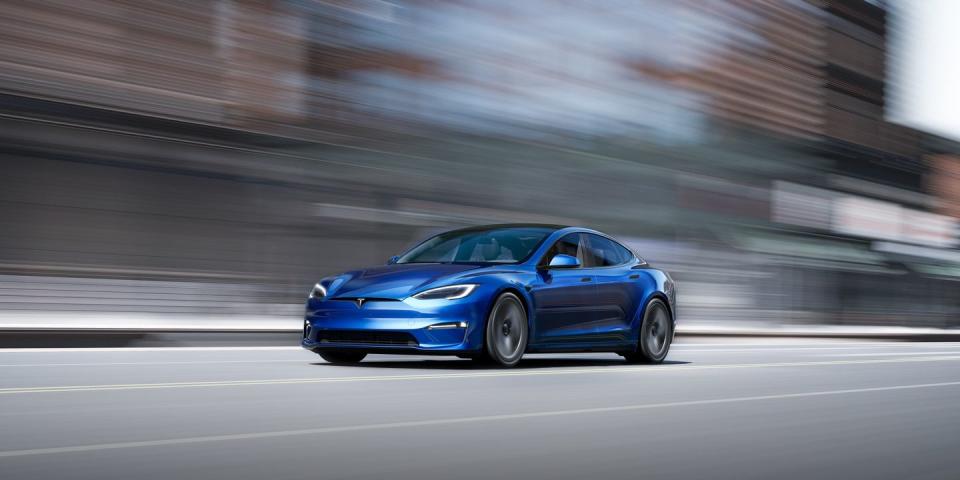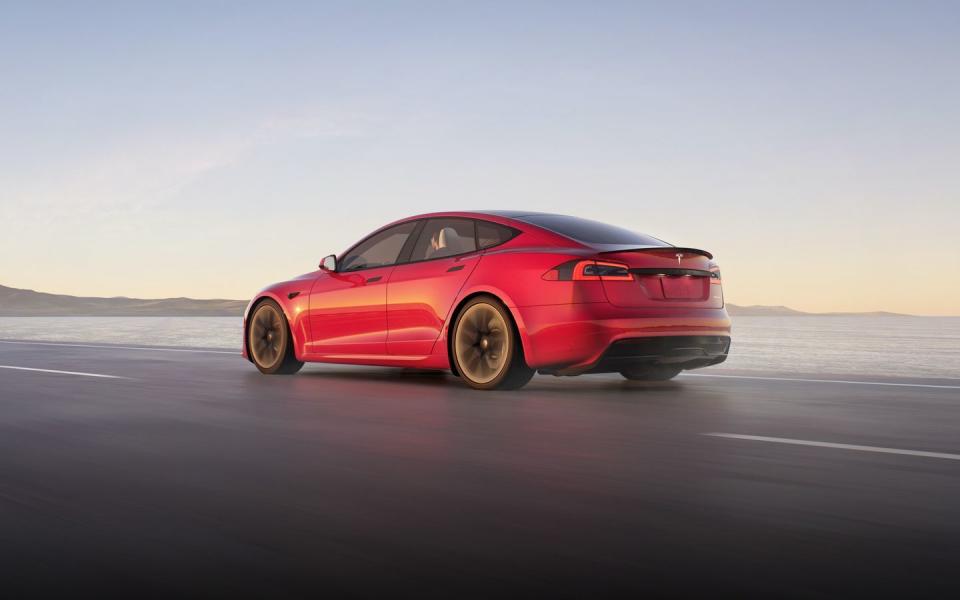The Model S Plaid Is Tesla's Hellcat

Two American manufacturers are outliers. One, a future-forward group that was all-electric from day one, has carved out a niche by seeing cars as tech products. Another, a beloved relic of America's muscle car past, makes just three massive cars. Both have the same problem, that their core product is a sedan that has not been updated in about a decade. Both have the same solution, too.
The companies, Tesla and Dodge, have almost nothing else in common. One has presented itself from day one as the giant-killing future of American cars, while the other has thrived in the past decade as little more than the brand that makes moving monuments to straight line performance. But their unique, odd business models have forced both into a strange corner, and they have both chosen to navigate out of that corner by simply making their once very ordinary cars outlandishly fast through a nearly-annual cycle of adding horsepower to what were once mid-market sedans and SUVs.

For Dodge, this is the Hellcat line. The first 707-horsepower Challenger was announced in 2014, but in the time since that outlandish motor has found its way into the Charger, the Durango, the Jeep Grand Cherokee, and the Ram 1500. At some point, that number stopped being impressive enough. So Dodge released the Hellcat Widebody, Hellcat Redeye, and the Demon, three cars that simply asked "What if there was more?" The end of the Journey and Grand Caravan mean every product Dodge makes is available with that comical 6.2-liter supercharged V-8, while there are as many Hellcat-equipped Challenger variants available as there are core Dodge products. The project is simply bringing a very large hammer to a situation that doesn't require a hammer at all, but it is absolutely working.
Tesla's Model S, revealed in 2012, is certainly more modern than the Charger platform that dates back to a 2006 release, but it is now nine years old in what has become the flagship segment for electric performance cars. Every competitor is much newer. So Tesla, with its access to ever-improving battery technology as the wind in its sails, started making the Model S fast. That started in 2014, with the P85D that boasted 532 horsepower. Within a few years, "Fast" became the P100D, which bumps that number up to a Hellcat-challenging 762 hp. But, as Hellcat showed us, outlandish is not enough. If an old car is to be interesting, you need to keep doing more.

And that lands us on Plaid. Tesla, apparently out of naming ideas and re-visiting old ones, has once again named a car after the same joke from the Mel Brooks parody hit Spaceballs that led to the "Ludicrous" mode on its P90D and P100D models. This one is startling: 1200 horsepower from a new tri-motor setup for awe-inspiring 0-60 times under two seconds and 1:30 laps at Laguna Seca (about five seconds off what a GT3 car does with racing tires). It is a monument to more, with no concern whatsoever about whether or not a 1000-horsepower all-electric sedan is a car with any value outside of 9-second quarter mile passes and YouTube videos accompanied by custom graphics of a driver shocked by the speed. It is sensational.
But it is also a nine year old car. With the short-lived Plaid+ trim level recently dead, Plaid is the headlining trim level of a long-awaited mid-cycle refresh for the now nine year old Model S. New features have largely come as software over the years, so Tesla has no new tricks to reveal on that front for the refresh of its flagship product. Minor updates have greatly increased aerodynamic efficiency, but the other notable changes are a new yoke-shaped steering wheel and an AI-assisted reverse system, two remarkably bad ideas that make a very interesting car slightly worse. So Plaid, with all of its exceptional speed and questionable badge design, is left as the headliner for a mechanical update that is otherwise fairly underwhelming. This is a strategy now: if you cannot make an existing car that already does what it does well enough better, you can simply make it more.
And it works. Both the Charger and the Model S still sell, and both serve the end goals of their parent companies just fine. Tesla believes their ability to iterate new technology on an old platform is revolutionary, and making that old platform much faster every few years helps keep that technology in the public eye. Dodge, meanwhile, has no allusions about what the Charger is, and their commitment to more over better has allowed them to find a new niche for an old car while capitalizing on their long history of large V-8s in larger cars. Both resulting products are unforgettable takes on what the muscle car can be, record-setters in segments that had long been written off as serious performance contenders. Whether or not that is a good thing, it certainly is more of a thing.
You Might Also Like

 Yahoo Autos
Yahoo Autos 